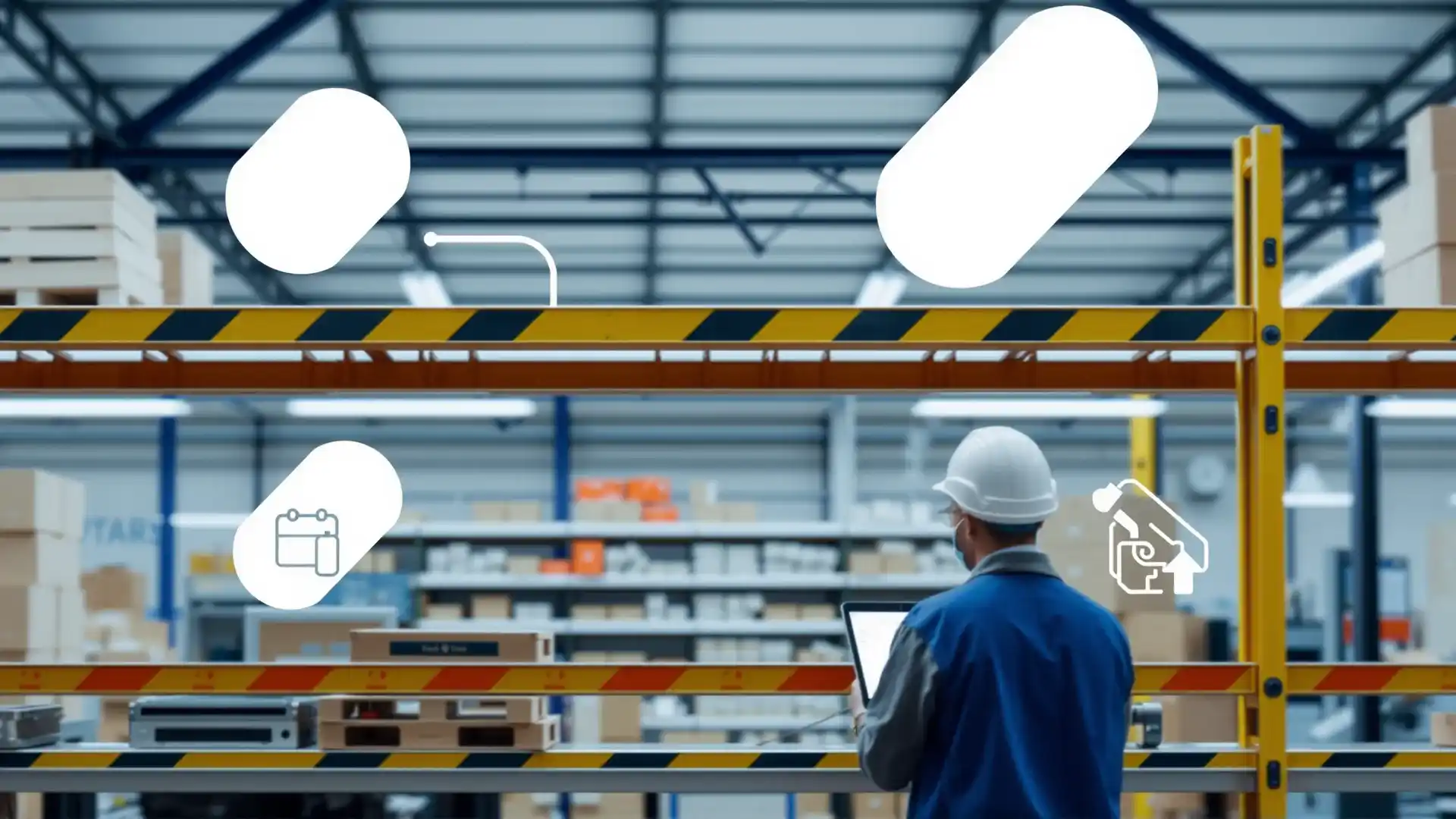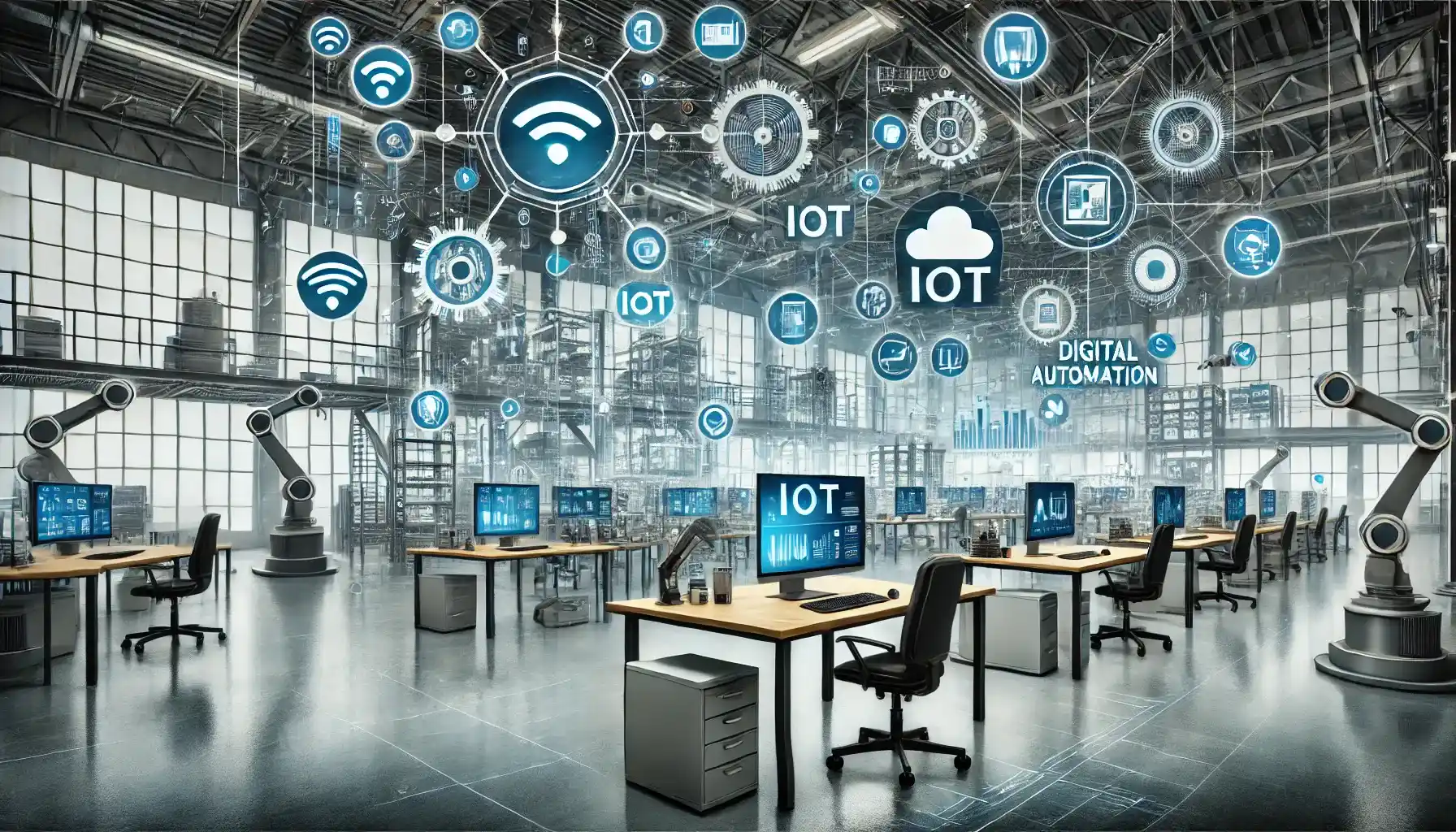Table of Contents
In today’s fast-paced digital landscape, businesses are constantly looking for ways to enhance productivity and efficiency. The integration of IoT and digital automation workflows has become a game-changer, transforming how organizations manage processes and devices.
By automating repetitive tasks and creating seamless communication between connected devices, companies can streamline operations, reduce errors, and free up valuable resources for more strategic initiatives.
In this article, we’ll explore 10 innovative ways IoT and digital workflow automation can significantly boost efficiency and drive growth in various industries.
How do IoT and Digital Workflow Automation boost efficiency?
The Internet of Things (IoT) has revolutionized our world, connecting billions of devices that can be managed remotely. By linking various devices to each other and the internet, IoT creates a powerful network that enhances productivity, agility, and efficiency. Tasks that once required manual effort are now automated, transforming industries across the board.
IoT systems can be managed more effectively when paired with digital workflow automation, ensuring seamless communication between connected devices. This combination automates repetitive processes, allowing businesses to focus on strategic initiatives while minimizing human error.
Workflow automation in IoT involves creating a series of automated actions that streamline and improve business processes. Rather than spending time on mundane, repetitive tasks, employees can concentrate on their core responsibilities. In turn, businesses achieve greater productivity, reduced delays, and more reliable results.
The IoT and Digital Workflow Automation market is projected to grow significantly, with estimates predicting it will reach $18.45 billion by 2023, growing at a compound annual growth rate (CAGR) of 23.56% between 2017 and 2023, according to a MarketsandMarkets report.

1. Smart Supply Chain Management
- Benefits: Reduced stockouts and overstocking, improved inventory accuracy, and streamlined logistics operations.
- Use cases:
- Implementing RFID tags and sensors to track inventory levels in real-time.
- Leveraging machine learning algorithms to forecast demand and optimize inventory levels efficiently
- Automating inventory replenishment orders based on real-time data from IoT-enabled sensors.
- Industry applications: Retail, e-commerce, manufacturing, and logistics.
2. Predictive Maintenance
- Benefits: Reduced downtime, improved equipment reliability, and optimized maintenance schedules.
- Use cases:
- Implementing connected devices to monitor equipment health and performance.
- Using machine learning algorithms to analyze data from IoT-enabled sensors and predict potential failures.
- Automating maintenance schedules based on real-time data from IoT-connected devices.
- Industry applications: Manufacturing, logistics, energy, and healthcare.
3. Personalized Customer Experiences
- Benefits: Improved customer satisfaction, increased loyalty, and enhanced brand reputation.
- Use cases:
- Implementing IoT and Digital Workflow Automation customer profiling to gather data on individual preferences and behavior.
- Using machine learning algorithms to analyze data from IoT-enabled sensors and predict customer needs.
- Automating personalized marketing campaigns based on real-time data from IoT-connected devices.
- Industry applications: Retail, e-commerce, hospitality, and financial services.
4. Smart Buildings and Energy Efficiency
- Benefits: Reduced energy consumption, improved building maintenance, and optimized resource utilization.
- Use cases:
- Implementing IoT and Digital Workflow Automation enabled sensors to monitor energy usage in real-time.
- Using machine learning algorithms to analyze data from IoT-connected devices and optimize energy consumption patterns.
- Automating energy-saving protocols based on real-time data from IoT-enabled sensors.
- Industry applications: Real estate, construction, facilities management, and sustainability.
5. Intelligent Fleet Management
- Benefits: Improved fuel efficiency, reduced emissions, and optimized logistics operations.
- Use cases:
- Implementing IoT and Digital Workflow Automation connected vehicles to transmit data on fuel efficiency and driver behavior.
- Using machine learning algorithms to analyze data from IoT-enabled sensors and predict traffic patterns.
- Automating route optimization based on real-time data from IoT-connected devices.
- Industry applications: Logistics, transportation, manufacturing, and delivery services.
6. Automated Quality Control
- Benefits: Improved product quality, reduced defects, and enhanced brand reputation.
- Use cases:
- Implementing IoT and Digital Workflow Automation sensors to monitor product quality in real-time.
- Using machine learning algorithms to analyze data from IoT-enabled sensors and predict potential defects.
- Automating quality control processes based on real-time data from IoT-connected devices.
- Industry applications: Manufacturing, food processing, pharmaceuticals, and consumer goods.
7. Smart Inventory Management
- Benefits: Improved inventory accuracy, reduced stockouts and overstocking, and optimized logistics operations.
- Use cases:
- Implementing IoT and Digital Workflow Automation enabled sensors to track inventory levels in real-time.
- Using machine learning algorithms to analyze data from IoT-connected devices and predict demand.
- Automating inventory replenishment orders based on real-time data from IoT-enabled sensors.
- Industry applications: Retail, e-commerce, manufacturing, and logistics.

8. Real-Time Customer Feedback
- Benefits: Improved customer satisfaction, increased loyalty, and enhanced brand reputation.
- Use cases:
- Implementing IoT and Digital Workflow Automation feedback systems to gather data on customer preferences and behavior.
- Using machine learning algorithms to analyze data from IoT-enabled sensors and predict customer needs.
- Automating personalized marketing campaigns based on real-time data from IoT-connected devices.
- Industry applications: Retail, e-commerce, hospitality, and financial services.
9. Predictive Analytics
- Benefits: Improved decision-making, reduced risk, and optimized resource utilization.
- Use cases:
- Implementing connected devices to transmit data on equipment performance and user behavior.
- Using machine learning algorithms to analyze data from IoT-enabled sensors and predict future outcomes.
- Automating predictive analytics based on real-time data from IoT-connected devices.
- Industry applications: Manufacturing, logistics, energy, and healthcare.
10. Automated Compliance and Risk Management
- Benefits: Improved compliance, reduced risk, and optimized resource utilization.
- Use cases:
- Implementing IoT-powered sensors to monitor potential risks or compliance breaches in real-time.
- Using machine learning algorithms to analyze data from IoT-enabled sensors and predict potential compliance issues.
- Automating alerts and notifications based on real-time data from IoT-connected devices.
- Industry applications: Financial services, healthcare, manufacturing, and logistics.
Conclusion
The future of business is digital, and the fusion of IoT and digital workflow automation is at the forefront of this transformation. As companies continue to seek innovative ways to operate more efficiently, drive growth, and enhance customer experiences, this synergy will play an increasingly important role.
By embracing this convergence, businesses can unlock new levels of productivity, innovation, and competitiveness, ultimately driving success in today’s fast-paced business landscape.